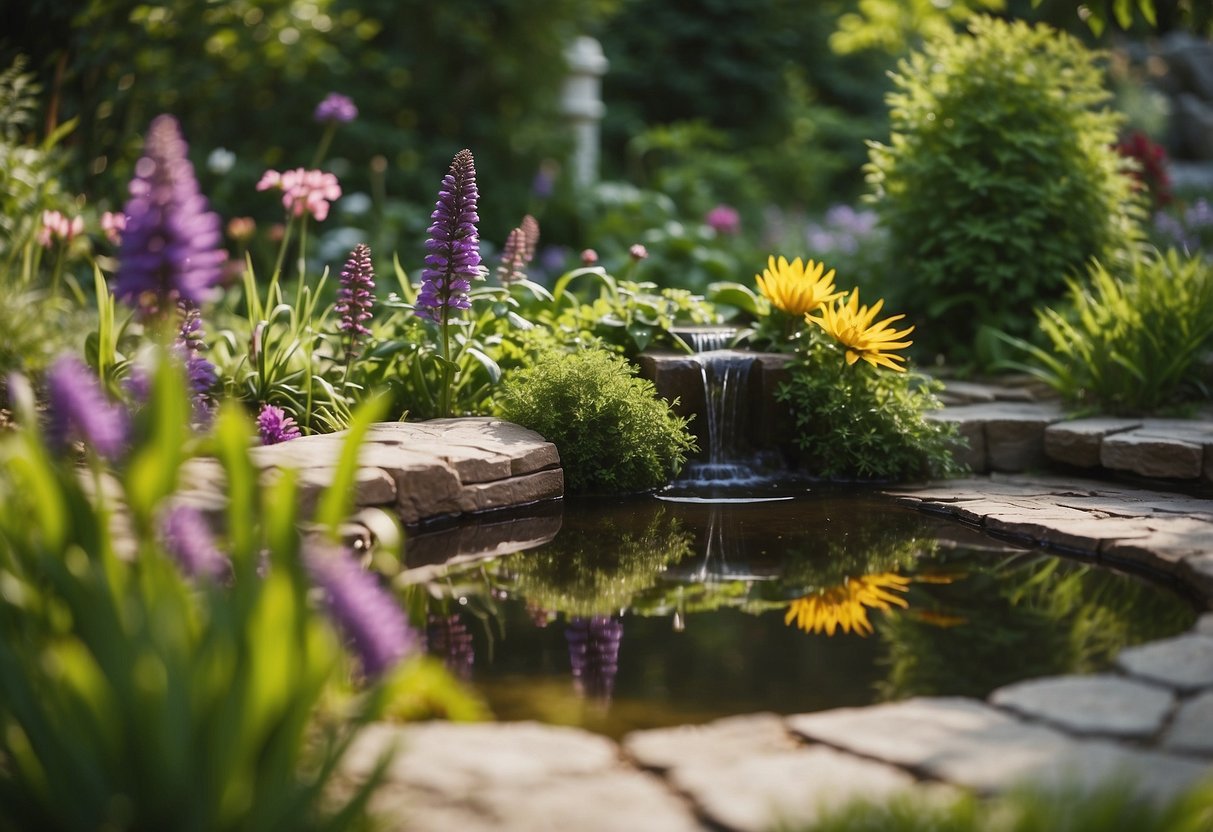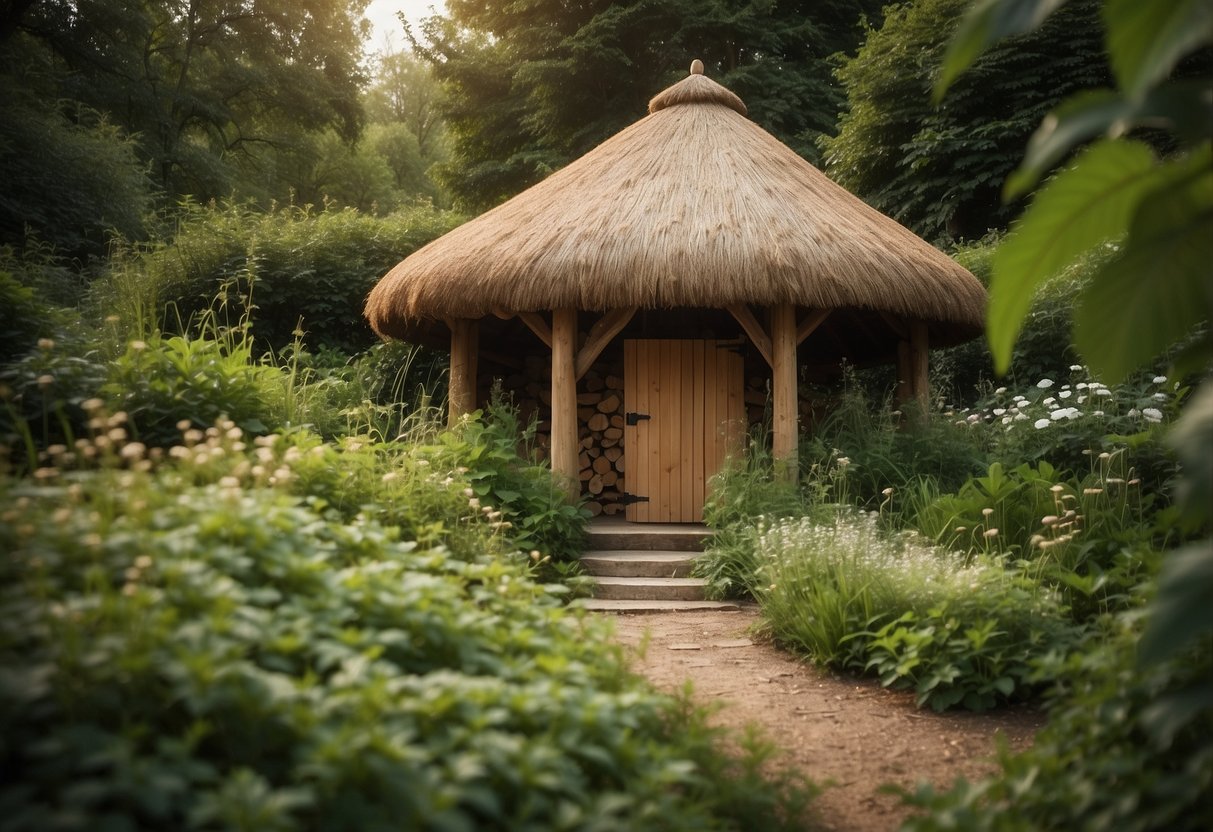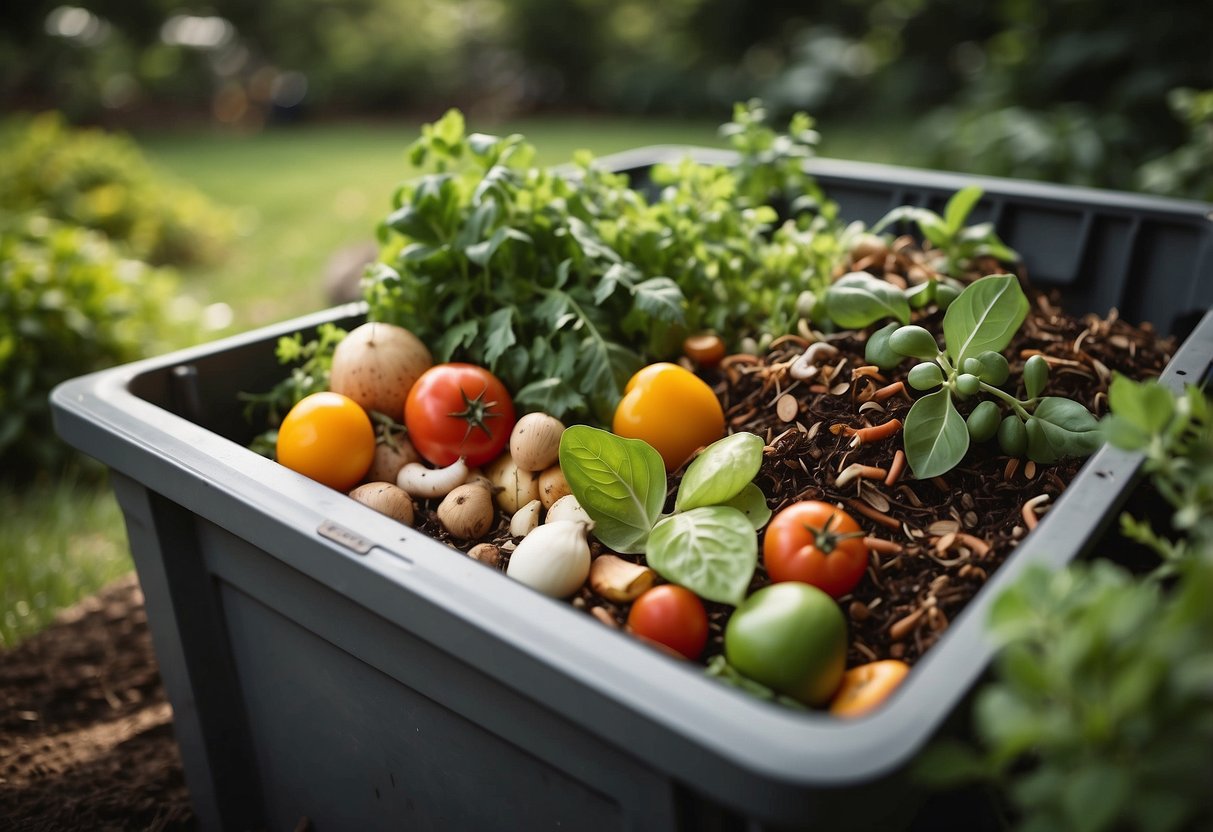Wildlife Garden Tips: Create a Nature-Friendly Oasis
Creating a wildlife garden can transform your backyard into a haven for birds, bees, butterflies, and other creatures. It’s a delightful way to coexist with nature and enjoy the beauty and benefits it brings to your outdoor space.

Why should you consider a wildlife garden? It’s an enriching way to help support local ecosystems and create a sanctuary for various species. Plus, it can turn your garden into a vibrant and lively area, full of fascinating flora and fauna. Let’s explore simple tips that will help you start and nurture your very own wildlife garden.
1) Plant Native Species

Choose plants that naturally grow in your area. Native species need less water and are easier to maintain. They also provide important resources for local wildlife.
Native plants offer nectar, seeds, and berries, supporting a variety of animals. By selecting these plants, you help restore the local ecosystem.
When planting, pay attention to the depth and spacing. Group plants with similar sunlight and water needs together. This helps them thrive and creates a more cohesive garden.
For more information, visit Garden for Wildlife’s Beginner’s Guide to Gardening for Wildlife with Native Plants.
2) Install Bird Feeders

Installing bird feeders is a wonderful way to attract birds to your wildlife garden.
Place your feeders either less than 3 feet or more than 10-15 feet away from windows to prevent birds from getting hurt.
Make sure to clean your feeders regularly. Soak them in a 20% solution of white vinegar and hot water. Let them dry well before refilling.
Store your bird seed in a container with a tight-fitting lid to keep it fresh and safe from pests.
Choose feeders and foods that attract the birds you want to see in your garden.
3) Create a Water Feature

Adding a water feature to your garden can attract a variety of wildlife. Birds, mammals, and insects all use water for drinking, bathing, and even breeding.
A small pond or birdbath can make a big difference. Make sure it’s near a tree or shrub to provide a safe spot for wildlife to approach.
Logs and branches can offer resting spots for animals like turtles and frogs. Adding aquatic plants can further enhance the habitat and provide cover for wildlife. For more ideas, check out this article on wildlife-friendly water features.
4) Grow Pollinator Plants

Creating a garden for pollinators can be very rewarding. Choose native plants that are known to support bees, butterflies, and hummingbirds. Native plants thrive best since they are adapted to the local environment.
You should include plants with bright red and orange tubular flowers, like those that attract hummingbirds. Consider adding plants that bloom at different times of the year to support pollinators throughout the seasons.
It’s also important to provide water. Fill a shallow birdbath with gravel or create a muddy patch in your yard to help the pollinators stay hydrated. These simple steps can make a big difference in attracting and supporting pollinators.
5) Build a Bug Hotel

Creating a bug hotel is a fun way to attract helpful insects to your garden. Use natural materials like leaves, twigs, and bark. Arrange them in layers to create cozy spaces.
Place the bug hotel in a damp, shady spot. Logs, sticks, and rotting wood are great for centipedes and beetles.
Drill holes in logs for bees and use straw for narrow gaps. Make sure it’s warm and dry, yet sheltered from wind and rain.
A bug hotel helps beneficial insects thrive, improving your garden’s health.
6) Provide Shelter for Small Mammals

Creating places for small mammals to live is important. Use logs and branches to build brush shelters. These give animals a safe place to hide and make nests.
Leaving dead trees, also known as snags, in your garden helps, too. Snags provide cover and attract insects, which are food for many small mammals. These efforts support biodiversity right in your backyard.
Learn more about building shelters for small mammals in your garden.
7) Avoid Pesticides

Using pesticides can harm birds, beneficial insects, and other wildlife. Instead, try natural remedies like placing mint, lemon balm, or human hair around your plants. These natural barriers can deter pests without harming the environment.
Native plants have natural defenses against local pests and diseases, reducing the need for chemicals. Cultivate these to create a healthier garden.
When you need to control pests, use non-chemical methods like hand-picking insects or using homemade sprays made from soap and water. Your garden will be safer for wildlife, and you’ll enjoy watching birds and butterflies in your pesticide-free haven.
8) Compost Kitchen Scraps

Composting kitchen scraps is a fantastic way to reduce waste and nourish your wildlife garden. Collect veggie peels, fruit scraps, coffee grounds, and even tea bags.
Avoid putting meat, dairy, and oily foods in your compost. These can attract pests and cause unpleasant odors.
Balance your compost with brown materials like dried leaves or cardboard. This creates optimal conditions for decomposition.
Turn your compost regularly with a pitchfork or shovel to aerate it. A well-aerated compost pile helps break down the materials faster.
Start today and turn your kitchen waste into rich, valuable compost for your garden.
9) Keep a Log Pile

Creating a log pile in your garden can boost local biodiversity. Small creatures like insects, frogs, and hedgehogs will find shelter and food there.
To build a stable log pile, start with big logs on the bottom. Add layers of sticks, bark, and dry leaves. Stack everything in a pyramid shape.
Place the log pile in a quiet, shady spot. Keep the bottom logs damp by burying them a few centimeters into the soil. If it looks dry, water it with a hose.
A log pile can also attract stunning beetles and other fascinating insects. You might spot a stag beetle if you’re lucky.
10) Install Bat Boxes

Installing bat boxes in your garden can help control insect populations. Bats eat a lot of bugs, including mosquitoes. This makes them a great friend for your garden.
Mount the bat box at least 12 feet off the ground. Ensure there is clear space around it for easy access. Position it to get 6-8 hours of morning sunlight.
Place the bat box near a water source if possible. Make sure it’s facing East or Southeast. This helps keep it warm but not too hot. Avoid West-facing as it can overheat.
Keep the area around the bat box free of obstructions for the bats to swoop in and out. For detailed guidance, visit NC Wildlife Community Science.
Creating A Wildlife Habitat

Creating a wildlife habitat involves choosing native plants and providing water sources. These steps help attract birds, butterflies, and other wildlife to your garden.
Selecting Native Plants
Choosing native plants is crucial. Native plants are well-adapted to your local environment. They need less water and care and provide food and shelter for local wildlife.
Look for plants that bloom at different times of the year. This ensures a constant supply of nectar and pollen. For instance, native wildflowers, shrubs, and trees like oak or maple are excellent choices.
It’s also good to include a mix of plant types. Small flowering plants attract pollinators like bees and butterflies. Taller shrubs and trees offer nesting spots for birds.
By planting native species, you contribute to your local ecosystem, helping to support the natural balance of your area.
Providing Water Sources
Water sources are essential for a wildlife habitat. All animals need water to drink, and some need it to bathe. You can add a birdbath or a small pond to your garden.
A birdbath is easy to set up. Place it in a shady spot to keep the water cool and add a few stones so smaller creatures can safely drink. Make sure to clean it regularly.
A pond adds more variety. Even a small pond can support fish, frogs, and insects. Add aquatic plants to provide shelter and improve water quality. If a pond isn’t possible, consider a water fountain or a simple dripping system.
By providing water, you create a welcoming space for wildlife to visit and thrive.
Nurturing Wildlife In Your Garden

Creating a garden that supports wildlife involves attracting beneficial insects and offering resources for local bird species. This helps promote a healthy ecosystem in your backyard.
Attracting Beneficial Insects
To attract beneficial insects, plant a variety of native flowers. Species like milkweed and goldenrod provide nectar and pollen for bees and butterflies, which are crucial for plant pollination. Select flowers that bloom throughout the year to ensure a constant food source.
Another key element is providing shelter. Install a bug hotel made from bamboo sticks and logs, offering safe havens for ladybugs and lacewings. These insects help control pest populations.
Avoid using chemical pesticides, as they can harm beneficial insects. Instead, use natural alternatives like neem oil. Mulching and composting can also attract decomposers like earthworms, improving soil quality.
Supporting Local Bird Species
To support local birds, plant shrubs and trees that offer berries and seeds, such as elderberry and sunflower. These plants provide essential food throughout the year. Also, consider installing bird feeders and keeping them filled with a variety of seeds to attract different bird species.
Adding a birdbath ensures that birds have access to clean water for drinking and bathing. Place the birdbath in a safe and visible location to allow birds to feel secure. Regularly changing the water helps prevent the spread of disease.
Nesting boxes are another fantastic addition. Place these boxes at different heights and orientations to cater to various bird species. Using native plants and avoiding pesticides will make your garden a haven for local birds.







